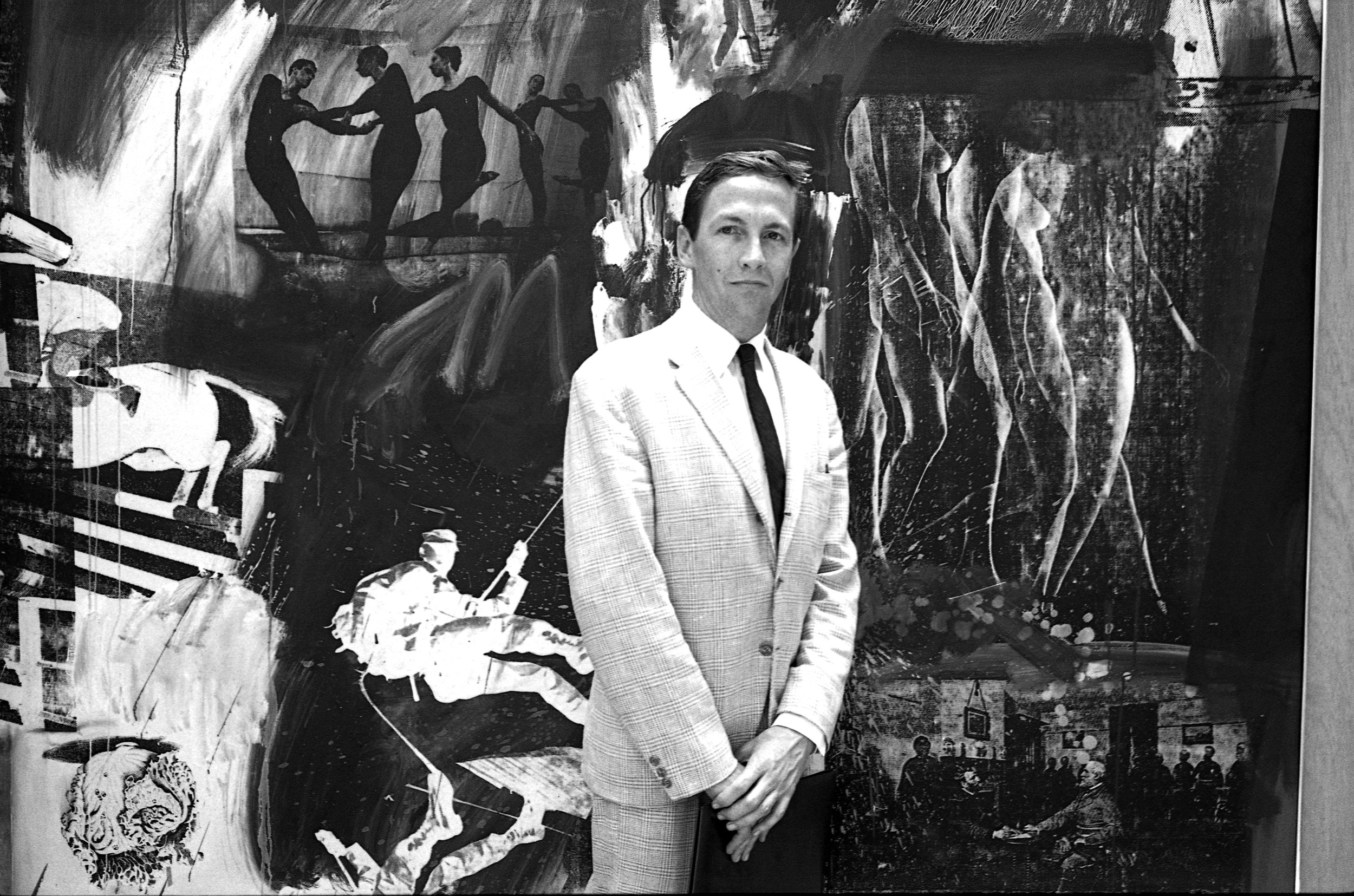TAKING VENICE UNCOVERS THE TRUE STORY BEHIND RUMORS THAT THE U.S. GOVERNMENT AND A TEAM OF HIGH-PLACED INSIDERS RIGGED THE 1964 VENICE BIENNALE – THE OLYMPICS OF ART – SO THEIR CHOSEN ARTIST, ROBERT RAUSCHENBERG, COULD WIN THE GRAND PRIZE.
At the height of the Cold War, the U.S. government is determined to fight Communism with culture. The Venice Biennale, the world’s most influential art exhibition, becomes a proving ground in 1964. Alice Denney, Washington insider and friend of the Kennedys, recommends Alan Solomon, an ambitious curator making waves with trailblazing art, to organize the U.S. entry. Together with Leo Castelli, a powerful New York art dealer, they embark on a daring plan to make Robert Rauschenberg the winner of the Grand Prize. The artist is yet to be taken seriously with his combinations of junk off the street and images from pop culture, but he has the potential to dazzle. Deftly pulling off maneuvers that could have come from a Hollywood thriller, the American team leaves the international press crying foul and Rauschenberg questioning the politics of nationalism that sent him there.
“I grew up during the Cold War when the world seemed as dangerous as it does today. But it also seemed to be filled with possibility, with the actions of people who dreamed big and took big chances.”
This was especially true of artists, always looking to buildsomething new. I became an art critic, then an author, and now afilmmaker. My goal is to make films about art that leap out of the art world and into a reckoning with what’s relevant in our lives through the stories that they tell.This film tells the story of the 1964 Venice Biennale, at a time when State Department officials and a team of unlikely conspirators were joined in their conviction that American democracy was worth the fight. They were determined to harness the audacity of American art to promote what was best about democracy. The artist they chose to represent the U.S. in their race to win the Biennale Grand Prize was Robert Rauschenberg, who was by no means a political artist, then. By the time I met him more than a decade later, he had come to believe that art had a more global responsibility. The film builds on a tradition of telling the story of America then through the eyes of now, because I want it to reflect how much the world and art have changed. I want there to be moments that sting with what we have lost, and moments that encapsulate what we have gained. The stakes are even higher than they were at that scandal-drenched Biennale, as artists everywhere try to create a way forward.
– Amei Wallach
Robert Rauschenberg in front of his silkscreen painting Express at the XXXII International Biennale of Art Exhibition, Venice, 1964. Photo Ugo Mulas © Ugo Mulas Heirs. All rights reserved
“I think the reason my work has been successful with the public is because it has changed their focus. I’ve changed the location of things that they see every day and didn’t know were worth looking at.”
Rauschenberg’s conviction – shocking when he first emerged in the 1950s – was that life was the prime material from which art could be made. And that meant the stuff of the life around him – car parts, ironing boards, lightbulbs, taxidermied animals, comic strips, magazine photographs – the stuff and the strategies kept changing as the world around him changed, but in his six decades as an artist, his insatiable appetite for experimentation never did. Rauschenberg has been called a forerunner to nearly every movement since the second half of the twentieth-century, and his influence only continues.
Photo Ugo Mulas © Ugo Mulas Heirs. All rights reserved
The Venice Biennale of Art is the oldest and one of the largest and most important of the world’s international contemporary art exhibitions. It is a place where artistic reputations can be made and broken. Since the Biennale was inaugurated in 1895 by King Umberto I and Queen Margherita di Savoia, it has become known as the “Olympics of Art,” where today 75 nations compete for top prizes for artists and exhibitions organized by the countries they represent.
More than 800,000 people visited the most recent of the every-two-year Biennale in 2022, the largest crowds in its history. The 2024 Biennale will mark the sixtieth anniversary of the historic year that Robert Rauschenberg became the first American to win the Biennale’s Grand Prize, the International Prize in Painting.



